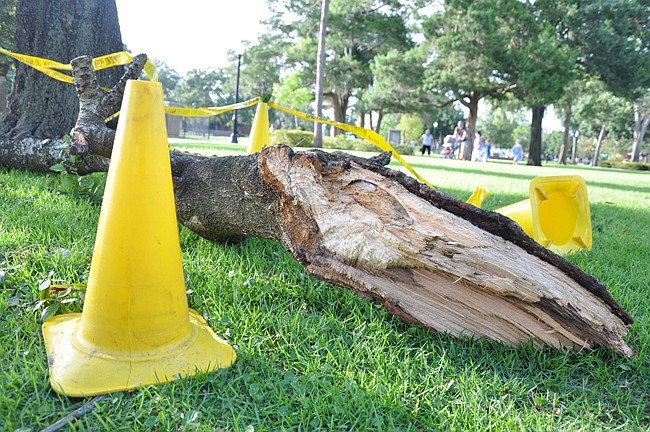- April 26, 2024
-
-
Loading

Loading

Tree codes put in place over the past 50 years could prevent Winter Park from replacing two-thirds of the dying trees it removes along city streets, according to city staff during Monday’s City Commission meeting.
Assistant City Manager Michelle Del Valle and City Arborist Dru Dennison told the Winter Park City Commission that the city plans to remove 2,205 dying trees along roads between fiscal years 2014 and 2017 – a safety measure to prevent branches from falling on cars and residents.
But only 934 of those trees will be replaced due to current regulations, Dennison said, including a minimum planting distance of 6 feet from underground sewer and water lines.
Many of the trees set to be removed sit right up against street intersections as well, clashing with a current regulation that bans the planting of trees within 15 feet of a crossroad.
“We’re dealing with quite a few issues that limit us,” Dennison said. “We’re limited with how many we can plant.”
Of the total right-of-way trees facing removal between fiscal years 2013 and 2017, only a third can be replaced.
It’s a concerning number, said City Commissioner Tom McMacken.
“We’re only replacing a third of the trees we’re taking down,” McMacken said. “That’s a staggering number. To say that we’re going to have two-thirds less trees than we do today, that’s not the vision I have for Winter Park.”
Mayor Ken Bradley said it’s a number that could have been much worse and that the city will do the best it can to replace the trees.
“I think the numbers and removals are far less than I expected,” Bradley said.
“Hopefully we’ll work through that.”
But the final number of trees that need to be removed has yet to be determined. City staff inventoried 300 trees last year after kick-starting its urban forestry management plan. This year they’ve put 1,277 trees into their system, adding up to only 1,577 – or 6 percent – of the city’s overall number of right-of-way trees.
Dennison said last October that the number of right-of-way trees needing to be removed sat between 10,000 and 13,000 trees.
The city had planned to replace many of the trees by getting residents to step up and volunteer to have them planted in their yards, Dennison said.
But that hasn’t been the case, she said.
“We’re finding folks who really don’t want a tree in front of their yard,” Dennison said.
“It’s kind of interesting … we haven’t forced the issue.”
The urban forestry management plan may put a dent in the city’s tree canopy for now, City Commissioner Steven Leary said, but removing the dead trees for safety reasons remains the his biggest concern.
“We’ll get there; Rome wasn’t built in a day … I’d rather spend the money right now to remove safety issues,” Leary said. “There’s people getting injured. There’s a tree that fell on Interlachen – there’s a picture floating around of it – and there’s a car buried underneath it … it wasn’t even during a rainy day.”
Del Valle said the city hopes to complete the tree restoration process within the next seven years. Winter Park would then check up on city trees every four years, she said.